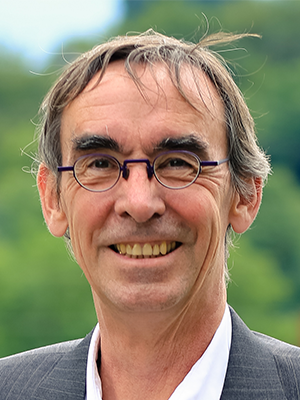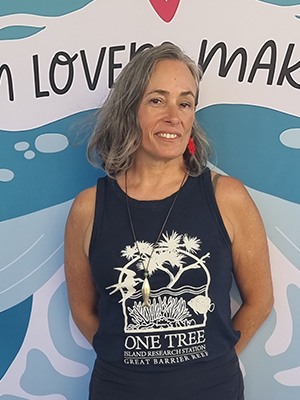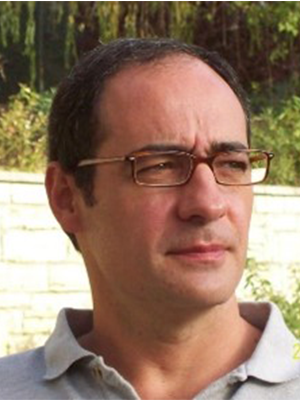KEYNOTE LECTURES
Arthur de Graauw
Research Associate Ancient Ports, CNRS-UMR 5133 Archéorient, MOM, Lumière University Lyon 2. https://orcid.org/0000-0001-9727-5040
Monday, September 9th

Arthur de Graauw is a French/Dutch coastal engineer, graduated from Delft University of Technology in 1976 in civil engineering of coastal structures and areas. While employed at DELFT HYDRAULICS (now DELTARES) and then at SOGREAH (now ARTELIA), he used many hydraulic scale models and mathematical models. He worked on numerous projects related to coastal erosion, industrial ports and marinas in the Mediterranean area including Lebanon, Gaza, Egypt, Libya, Tunisia and France.
From 2002 to 2015 he managed the Port Revel ship handling training centre using manned models where maritime pilots from all over the world come for training. This led him to work with the Panama Canal extension.
He has been active in ancient ports since 1998 and created a new catalogue of ancient ports encompassing nearly 6000 places. He is the webmaster of www.AncientPortsAntiques.com focusing on many technical aspects of ancient ports like quays and breakwaters including harbour silting-up, ancient ships and navigation, ancient maps and units of measure, ancient climate including sea level rise, waves, earthquakes and tsunamis.
Abstract:
PALAEOPORTOLOGY – Ancient Coastal Settlements, Ports and Harbours
This presentation aims to compare ancient and modern port structures hoping that the ancient can tell us something useful for the modern, with special focus on breakwaters and quay walls. Archaic shipping and the oldest known port structures are briefly presented. Vertical breakwaters and quays, large concrete blocks called pilae, arched breakwaters and rubble mound breakwaters are described in the ancient world. A few geomorphological aspects of coastal harbours are also reviewed.
It is concluded that most natural shelters were used in Roman times, but some major ports have been built in places without any natural shelter, for strategic or economic reasons.
Most of today’s concepts for maritime structures were already existing in Roman times and it seems that little progress was made until the 18th c. when large maritime structures started to be built again. The combination of reinforced concrete and steel enables modern engineers to build higher, deeper, and larger than Roman engineers could dream of, but some modern structures may not last as long as some Roman structures, especially in salt water …
Ana Vila-Concejo
Professor of Coastal Geomorphology at the University of Sydney, Australia

Ana graduated in Marine Geoscience from the University of Vigo (Spain), where she completed MSc on urban estuarine beaches. In 2004 she completed her PhD from the University of Algarve (Portugal). Ana moved to Australia in 2005 and has been working at the University of Sydney since 2007 where she has consolidated a successful career in Coastal Geomorphology becoming a full professor in 2023. Ana’s research has mostly focused on tidal inlets, beaches in estuaries and bays (BEBs) and coral reef eco-morphodynamics. She has published over 100 contributions to the literature and has an extensive international network of collaborators. At the University of Sydney, Ana co-leads the Geocoastal Research Group, and she is also Deputy Head of the School of Geosciences, Co-Director of the Marine Studies Institute, and Deputy Director of One Tree Island Research Station on the Great Barrier Reef. She is part of the Science Advisory Committee of the Sydney Institute of Marine Science and between 2020 and 2024 she was a member of the Australian Research Council (ARC) College of Experts. In 2016 Ana co-founded the international network for Women in Coastal Geoscience and Engineering, which she co-chaired until 2023. Ana is the co-host of the successful podcast Coast2Cast where she interviews coastal scientists and engineers from all over the world.
Abstract:
Eco-morphodynamics of coral reefs.
Coral reefs provide significant ecosystem services including food security and coastal protection to people and property, aside from representing a major tourist attraction. Corals around the world are irreversibly transforming due to unprecedented rapid environmental change. Recent mass bleaching events have shown the impact of climate change driven marine heatwaves for coral reef health and the demise of reef structure. Because returning coral reefs to their past healthy state is no longer an option, there is a pressing need to understand, quantify and model the impact of new environmental conditions on coral reefs.
Eco-morphodynamics are important in coral reefs, however, most of the research has occurred in isolation within disciplines, focussing on specific aspects of biology, geology, or engineering alone. This multi-disciplinary presentation focuses on recent advances in understanding how coral reefs interact with waves and sediments under climate change. Using multiple spatial and temporal scales, the presentation discusses the processes that lead to lagoon infilling, rubble formation and transport, coral island development and evolution, and wave dissipation. This research delves into what these processes mean for an uncertain future and how the new knowledge and models inform nature-based solutions.
Maurizio Brocchini
Professor at the Department of Civil, Building Engineering and Architecture, Università Politecnica delle Marche, Ancona
Thursday, September 12th

Maurizio Brocchini is an expert in the hydrodynamics and morphodynamics of coastal, estuarine and riverine waters, with over 30 years of experience in the field. His main area of research is the mathematical and numerical modelling of shallow water, with a focus on tsunami evolution, and turbulent flows. From 2015 to 2021 Head of the Department of Civil, Building Engineering and Architecture of the Università Politecnica delle Marche, he is currently Scientific Advisor for the Italian Civil Protection “Commissione Grandi Rischi” (High Risks Committee – Tsunami Branch) and member of the Blue Italian Growth Cluster Scientific Committee. Recipient of a Marie Curie Fellowship for research in the years 1993-1996, he is listed among the “World’s Top 2% Scientists”.
Abstract:
Sea-river interactions within microtidal systems: field observations, modeling and applications.
An analysis is proposed of the hydro-morphodynamic interactions evolving at the estuary of rivers debouching into microtidal environments. The aim of such analysis is twofold: i) to elucidate fundamental issues on the role played by different dynamics of different scales (from wind to infragravity waves, to storm surge), ii) to provide insight useful for the management and mitigation of floods of estuarine cities.
Largely relying on field observations but also on the available literature, an integrated modeling approach is promoted, which regards the estuary as part of one single physiographic unit, including both the river catchment and the contiguous coastal domains. This not only avoids fragmentation associated with distinct domains requiring different types of models and boundary conditions, but it also leads to significant improvements in the management of the risk of floods of estuarine cities. The increase in amplitude of dynamic forcing due to climate change (e.g. river flow rates, sea level rise, storminess, etc.) and their potential synchronicity are discussed in relation to this approach.
Iñigo Losada
Professor and Director of Research of IHCantabria, University of Cantabria, Santander-Spain
Thursday, September 12th

Iñigo Losada is Full Professor in Coastal Engineering of the Civil Engineering School of the University of Cantabria and Director of Research of IHCantabria, a multidisciplinary research institute with a strong component in coastal processes and engineering. His research has been dealing with a broad range of topics including coastal processes, wave and structure interaction modelling, nature-based solutions, ocean energy and coastal risks and adaptation. He has coordinated the coastal chapter in the AR5 IPCC report and act as leading author in other reports. Editor-in-Chief of Coastal Engineering for 8 years, Losada has received some of the highest recognitions in the field, including the M. Selim Yalin Lifetime Achievement Award (IAHR), the John G. Moffatt and Frank E. Nichol Harbor and Coastal Engineering Award (ASCE) or the “Enrico Marchi” Distinguished Lecture (Italian Scientific Society of Hydraulic Engineering). He is also an elected member of the Spanish Royal Academy of Engineering and the European Academy of Sciences. Working for multilateral organizations and different administrations, Losada has coordinated climate change risk assessments and adaptation plans in coastal areas in more than 30 countries. He has been also a member of the Coastal Engineering Research Council (ASCE) and Co-Chair of ICCE in Santander in 2012.
Abstract:
Coastal adaptation and resilience: The greatest challenge of coastal engineering.
In a world where mitigation and decarbonization actions are increasingly falling short of the targets needed to keep temperatures below 1.5, where the growth of coastal cities is projected to be exponential in the coming decades, and where the development of the blue economy will generate enormous pressure on the coast, the role of coastal engineers will become ever more critical.
These processes result in relevant changes in hazard, exposure and vulnerability that significantly increase the risk to natural and socioeconomic systems. In this context, coastal adaptation is the central element to ensure the resilience of the systems that either host or depend directly on the world’s coasts. But its planning, implementation and monitoring must be based on a high scientific-technical knowledge that generates important challenges for coastal engineers and an important need to work in collaboration with other disciplines.
During this talk we will analyze some of these challenges, we assess the state of the art and will make identify research topics that our profession will need to address in the near future to properly meet societal needs.